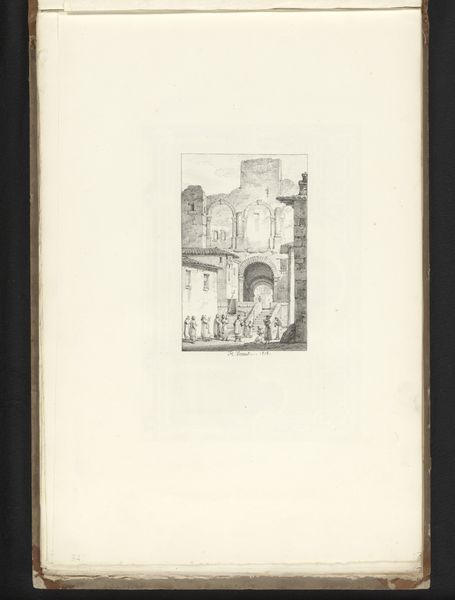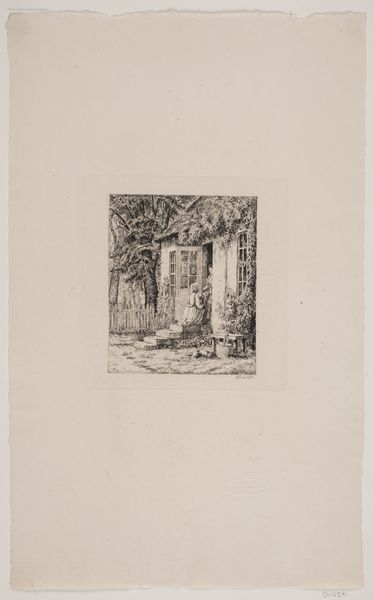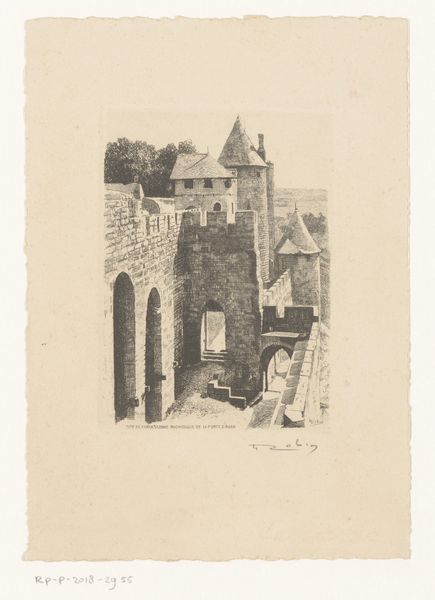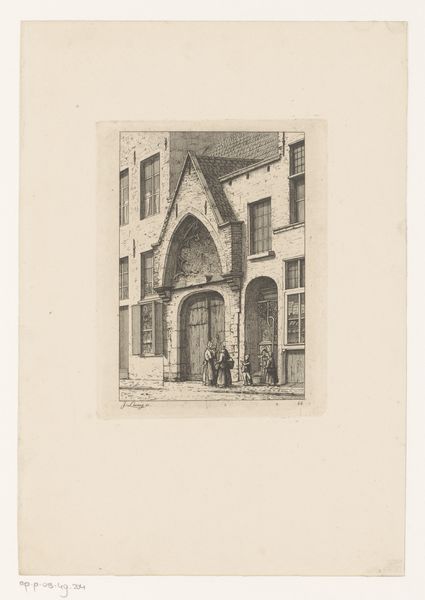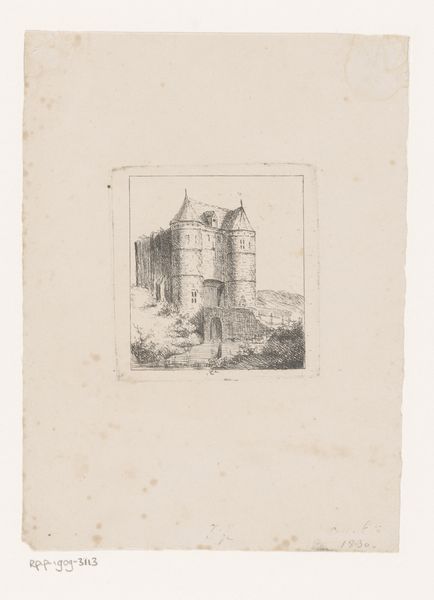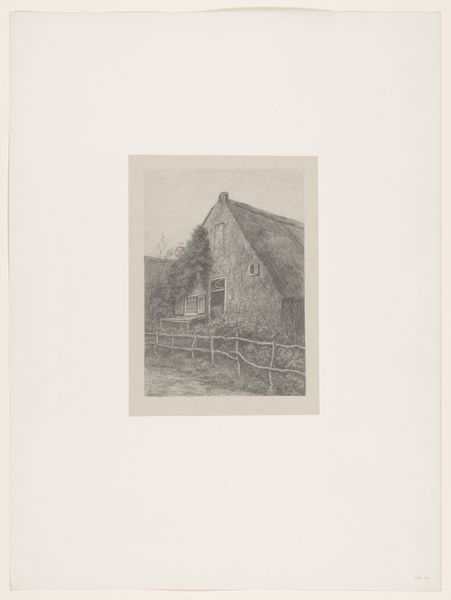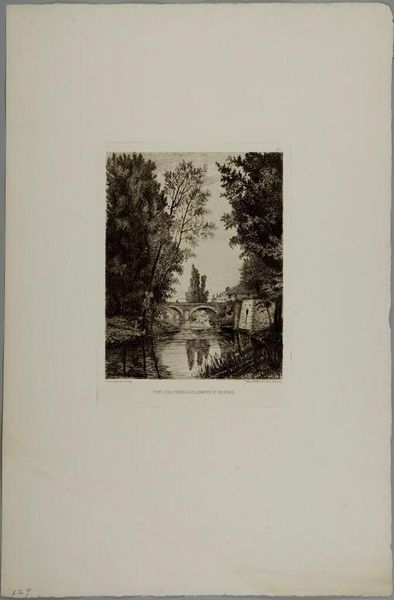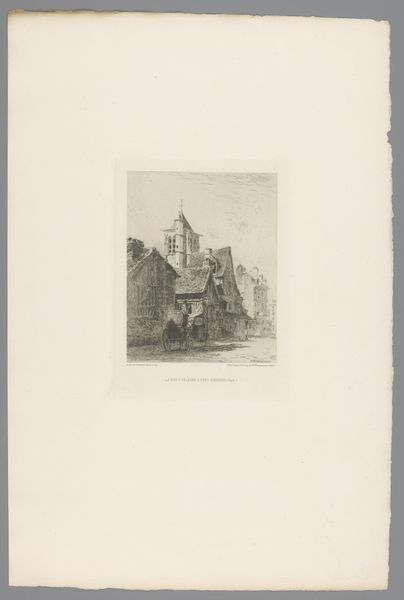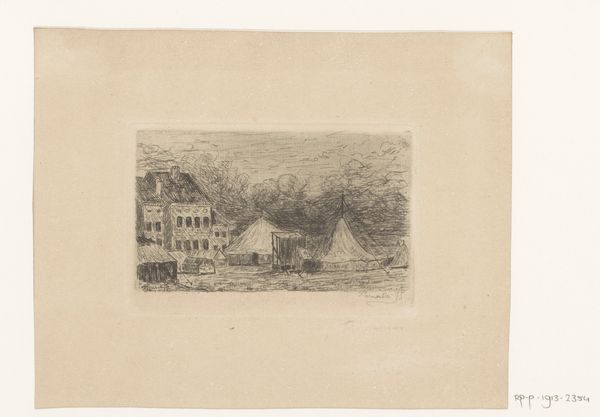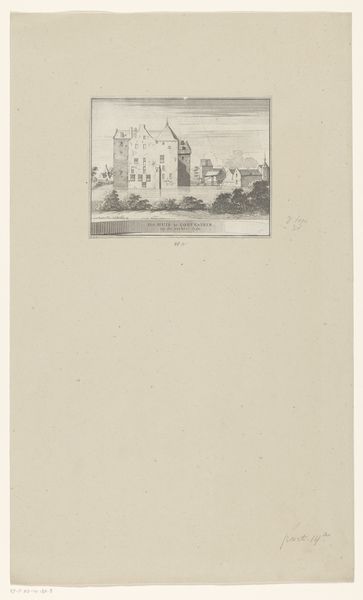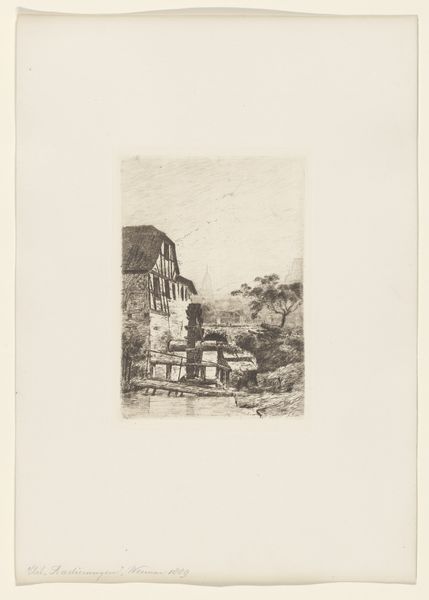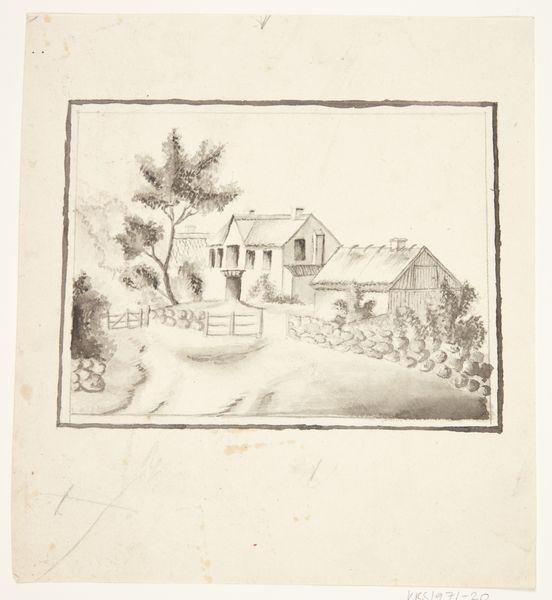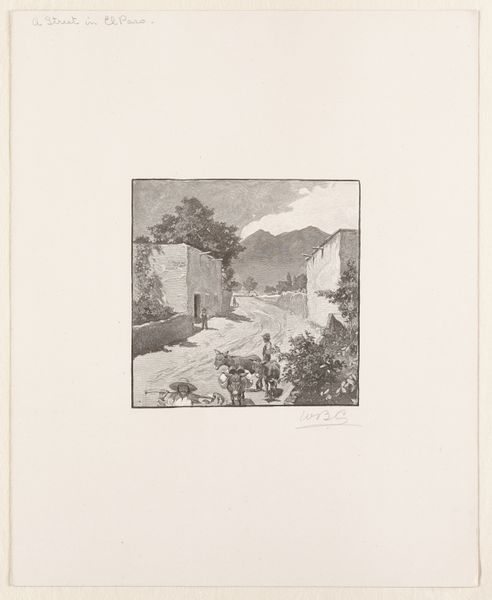
Dimensions: height 278 mm, width 198 mm
Copyright: Rijks Museum: Open Domain
Editor: This etching by Henri Manesse, titled "View from the Window of a Room in the Hôtel de Francfort," created sometime between 1906 and 1911, has this wonderful atmospheric quality. It’s really interesting how the artist chose this very ordinary, almost mundane subject, focusing on the architecture and rooftop of what looks like a neighboring building. What draws your eye in this piece? Curator: It's fascinating how Manesse used etching to capture not just a scene but also a specific social reality. The material production of this work speaks volumes. An etching inherently involves repetitive labor. Do you notice how the crosshatching technique and subtle variations in line thickness are employed to render a convincing textural impression of worn roof tiles? That choice indicates, to me, his interest in showing not only a view, but also in conveying an urban lived-in reality, which differs considerably from grand architectural monuments. Editor: So you're saying the process itself emphasizes the subject's working-class setting? Curator: Exactly. This contrasts starkly with how landscape art was conventionally viewed then. Manesse elevates an everyday cityscape, one born out of economic practicality rather than aesthetic intent, by dedicating this time-consuming labor to its representation. What materials were accessible to him, and how did his labor manifest the essence of this scene? Those questions become vital when understanding the artist’s message. Editor: I see! It almost makes you think about who inhabited that hotel and what their lives were like. Curator: Precisely. Consider the consumption aspect too – the prints would have been affordable, potentially enjoyed by a wide audience who shared a similar urban experience. The work itself participates in and reflects their socio-economic world. This contrasts traditional art's limited accessibility, making the artist an insightful observer of societal conditions. Editor: It's remarkable to think how much the materials and process reveal about the subject and the audience of the art. I'll definitely look at art differently now, considering the material conditions of its creation.
Comments
No comments
Be the first to comment and join the conversation on the ultimate creative platform.
